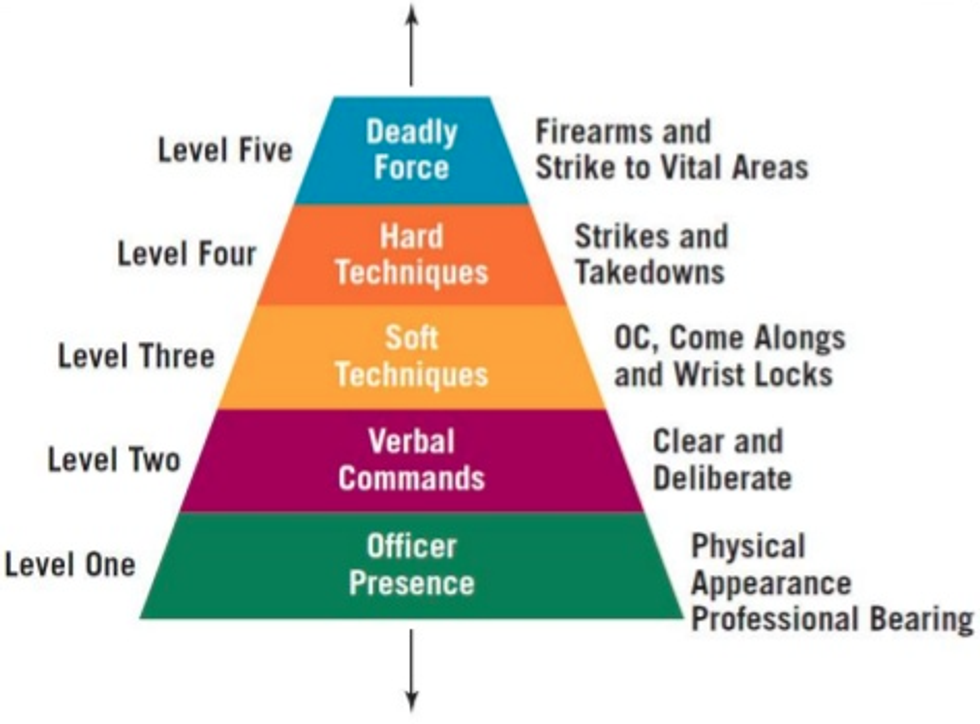When you go off to college, the last thing you think about is your own personal safety when you're OFF CAMPUS. Yes, we all check the stats or take some interest in crimes that happen on campus, but very few really care about what happens off campus.
When I told people I was going to the University of New Haven, many said, “oh, that’s a rough area.” New Haven is the most dangerous city in Connecticut, with a 1 in 80 chance of being a victim of crime, according to last year’s FBI crime statistics. But so far, I have had no big problems. Why? Because I have spent hundreds of hours in martial arts classes, watching self-defense lectures online, talking to law enforcement professionals, taking classes or getting online certifications that are based around personal security, learning from the best on how to avoid potentially dangerous situations. I am not going to claim to be a self-defense expert, but I have enough knowledge to keep myself safe. Knowledge I am going to share with you in this article. You should take this information and learn from it by taking classes on your own.
The most effective way to keep yourself safe is to obviously avoid any situation that might lead to danger. My three A’s to avoiding a dangerous situation are; be alert, aware, and active. Being Alert of a situation arising is the first step to keeping yourself safe. If you are able to stay alert and identify signs of trouble you can avoid them. Some signs of a bad situation would be things such as, being alone in a dark area known for crime, seeing a group of people coming towards you or following you in an area known for gang activity. Once you have identified a potential problem you have to be aware of your surroundings. If you believe someone is following you, you have to think to yourself, what background information do you have on the area. Is it a public area in which people should be following you (a park, high traffic path, ect.) or are you in an area that is primarily solitary. Once you have made yourself aware of the current situation you have to become active. You have to actively find a way to get out of the situation at hand or decide how you plan to combat the potential threat. This is also known as the fight or flight mentality. If you are able to avoid a dangerous situation you have successfully completed the three A’s, but you should not consider yourself safe until you are in an area you personally feel is safe and secure. If you cannot get to that safe area in a timely manner and you feel the potential for another situation to arise is high, contact the local police department. No department will have a problem helping you if you feel you are in an unsafe situation.
But what do you do when the three A’s leaves you with no way out, and confrontation is inevitable? This is when you have to decided how much force you are willing to use to defend yourself. I personally use the standard use of force continuum used by all law enforcement officers for judging how much force to use in every situation. It is the safest and easiest plan to follow in a situation that goes beyond stressful. My adaptation of the continuum is the same five steps used by LEOs but with some slight adaptations because we are regular civilians and not officers.
Step One is declaring your presence and making sure that the subject(s) are aware that you are aware of them. If you make the potential attacker aware you know they are there through a simple hello or even eye contact, you can judge a lot by the way they respond. Although reading someone’s body language is a skill we all have, we cannot rely on it fully. Even if someone comes off friendly you have to keep yourself aware and alert of everything they are doing. Until someone is far enough away from you to feel comfortable again they have to be seen as a threat.
Step Two would be once you realize something bad is going to happen, an attack is imminent. You now have to use verbal commands to make the subject(s) feel that you are in control of the situation. Telling them to “back up!” or to “leave you alone you have pepper spray!” in a commanding and assertive manner can make an attacker rethink your vulnerability. If you can get an attacker to think that this battle is not worth the fight you can hope they will change their mind and decide to leave you alone. If this does not work, step three is next.
Step Three is the use of OC (pepper spray), if you live in an area that allows you to carry pepper spray, you should. Whether you are male, female, young, old, carrying pepper spray should be a part of your everyday carry. OC spray comes in all shapes and sizes that it can be carried on a keychain or in a pocket with no hindrance to the owner. Pepper spray is a great way to stop and attack before it even happens, just the presence of it being draw can make people back off and rethink an attack. If a person decides to continue with an attack the spray can be used to disable your attacker and give you a chance to escape. Even if you use OC spray you still have to be prepared to fight back, I have personally been sprayed and it was a terrible experience but I was able to continue to fight for almost a minute after contact. It did eventually disable me, but OC spray cannot be relied on solely for stopping an attack. This leads us to step four.
Step Four is the use of hard techniques such as hitting, kicking, knee and elbow strikes, and also use of objects around you. A part of being aware of your surroundings is that you are aware of any potential weapons in the immediate areas. Sticks, bags, rocks are just a few examples of things you could use. If you have deployed OC spray and have to now use combative you have to take into account that the person really isn’t going to be able to see, make sure you become quick on your feet and avoiding striking the face and then touching your own. If you come in contact with the pepper spray you have to make sure you do not touch your own face, this could take yourself out the fight. If you could not deploy spray you should use combative measures against the attacker. I strongly recommend everyone takes some form of self-defense class or classes. If you want to be truly protected, you should learn and develop the hand to hand combat skills that martial arts classes teach you. If this step does not stop and attack you have to go to step five.
Step Five is the use of deadly force; this is anything that involves defensive measure that is specifically designed to take a person’s life. This is a step everyone should think about ahead of time, how far are you willing to go to protect yourself? This step is one shrouded in legal problems so I am going to leave this one up to you. I personally decided a long time ago that I was willing to match deadly force with deadly force. That means that I would only use deadly force when I believe that my attacker(s) are going to use it against me. Many people will disagree with me on this one and many will agree, it is very much a personal decision.
You do not have to follow this continuum exactly in order. Some situations will require you to go from step one to step five because it escalated so quickly. It could also bounce around, such as going from step three back down to step two, back up to step four. It is as fluid as the situation it is being used in. You should train and prepare yourself for these situations so that you can avoid or survive, simply reading this article is not enough. I hope that my knowledge will influence you into taking self-defense classes and also helped you develop your knowledge of how to handle or avoid these situations.




 Photo by
Photo by 














